Consciousness of the Real — Forces — Sylvain Lebel
Forces
Gravitation
In this model, gravitation does not result from a force of attraction, but from local deformations of quantum space-time caused by the presence of matter. Matter, by transferring spations to another dimension (via transions), partially empties space-time of its substance. This creates a local depression in density and pressure.

A planet or a photon (figure A) does not experience a force in the classical sense. They simply follow the curvature induced by the flow of the spatio-temporal fabric. Black holes (figures B and C), then, would be fields in which all flavors of space-time spations are being transferred. The question that once arose — what happens to matter entering a black hole — finds its answer: it does not enter it; destroyed, it merely increases the number of spations that the black hole can transfer at once.
Origin of Quantum Forces
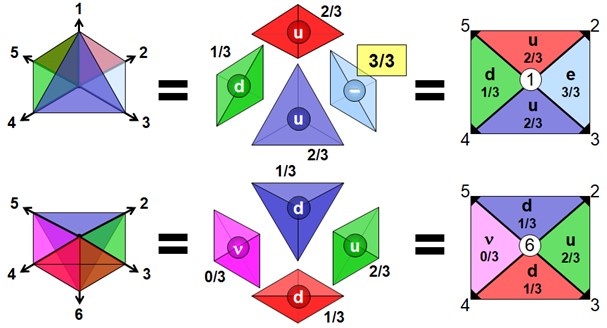
A spation with electron charge (3/3) would not be directly influenced by a current of spations sharing zero to two axes with it, but would instead be driven by a current composed of two or three spation charges that, together, share its three axes. Thus, a composite particle made of three quarks with a uud charge configuration-such as the proton-can interact electrostatically with a particle carrying an electron charge.
Strong Force
Elementary particles with different charges could combine if they share dimensional axes. As their fields overlap and jostle each other, they would, through inflareaction, become more massive than the sum of their individual components taken separately.
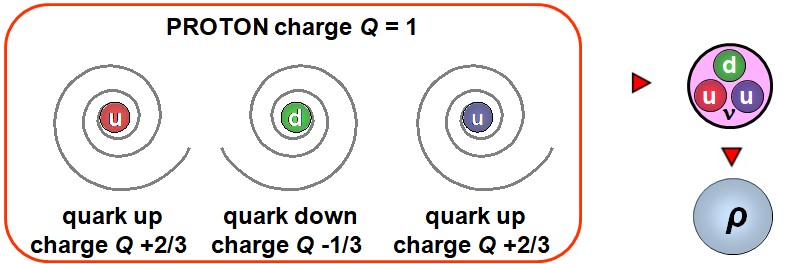
Immersed in the same field, the force binding them would grow stronger the farther apart they are, up to the point of coupling rupture. This force would therefore possess the characteristics of what is called the strong force. It could indirectly bind nucleons, thus enabling them to form atomic nuclei:

Quark Alternation

Composite particles, made up of three u and d quarks, would thus form the nucleons known as the proton and the neutron, which make up atomic nuclei. Since the proton shares only two axes with the neutrino charge, spations of that charge could occupy the same position in space-time. Likewise, since the neutron shares only two axes with the electron charge, spations of that charge could also fill it. Their presence would stabilize the nucleon in its proton or neutron charge, but would not prevent the quarks from alternating in "color."
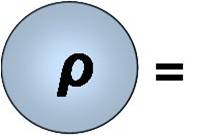


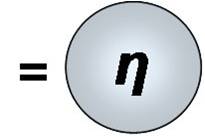
Since quarks, once united, would not only draw in the electron or neutrino charges, but also all quark charges, the pressure they exert should likewise cause them to alternate within nucleons — without changing the nucleon's relationship to the electron or neutrino.
Weak Force
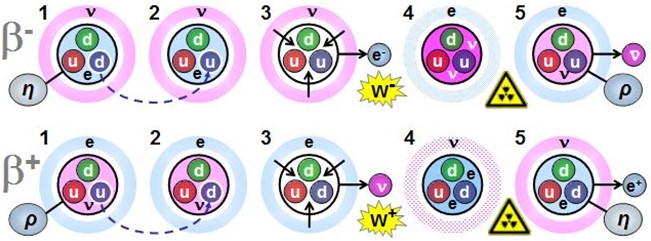
Since a quark change (from u to d or d to u) would invert the nucleon's relationship with the spations of neutrino and electron charge, this implies that the constraints exerted by these spations — or by their particles — could also force the nucleon to undergo a quark change, with all the consequences that follow.

As the proton draws in the electron charge without absorbing it, spations of that charge accumulate around it, thereby increasing their pressure. If an electron crosses this barrier of electron spations, the proton would reorganize into a neutron by changing the flavor of one of its u quarks into a d quark.
Electrostatic Force

The presence, within a restricted space, of particles containing a surplus of electron charge would force space-time to drain that charge and expel excess spations of other charges. Likewise, the presence of particles containing a surplus of proton charges would compel space-time to drain those charges and expel excess electron-charge spations. This, according to the model, would be the origin of the electrostatic force.

This phenomenon would generate the attractive and repulsive electrostatic forces, following the vectors of the electron-flavored spations.
Strong and Weak Vector Interactions

Illustration of strong vector interactions of repulsion/attachment (A), and of attraction/disintegration (B and C) between fields with continuous flow.
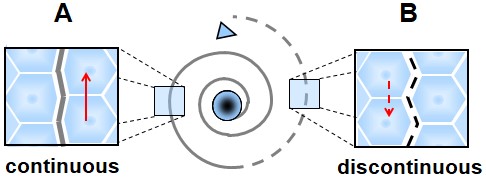
Figure used to illustrate how, with increasing distance, the flow of spations toward the core of the vortices becomes discontinuous.

This allows us to anticipate magnetic phenomena.
Magnetic Force

Electromagnetic waves:

And thus the observed characteristics of the electronic field of atoms:

Figures illustrating that the electron could be in phase with itself, which would favor specific levels of kinetic energy (velocities). Together with the azimuthal, magnetic, and spin quantum numbers, this would make it possible to characterize the electrons within the atom, knowing that no two electrons could share the same four quantum numbers.

The Photon

It is only after coiling upon themselves and disconnecting from the cellular medium through their rotation that they would become photons. Even though devoid of electric charge, the photon would carry a mass of rotating spations — spations of electron flavor in this case. As it perturbs the surrounding space-time, it would be instantly propelled by inflareaction.
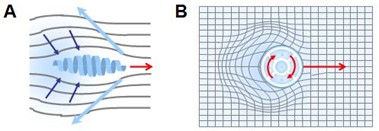
A photon could not advance even a few spation diameters without the spations just behind its thickest point being momentarily relaxed. Immediately filled through sub-spatiotemporal linkage, this would result in a spatiotemporal pressure surplus exerted on the rear of the photon, propelling it like a wet bar of soap squeezed between fingers — all the way up to the wave propagation speed.

A photon could be deflected, guided, aligned, and coupled to a field if its rotation speed is compatible, be absorbed, or produce new particles. The photon could also be produced in pairs during strong vector coupling and vortex disintegration of a particle and its antiparticle.
Nucleosynthesis
This model thus appears capable of explaining the formation of chemical elements, after atomic nuclei have been forged through nucleosynthesis in the hearts of stars.

Chemical Bonding Forces
Covalent bond through electron sharing:
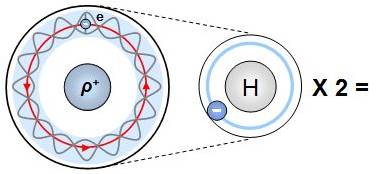
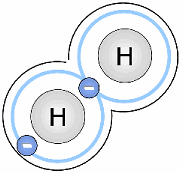
Van der Waals bond:
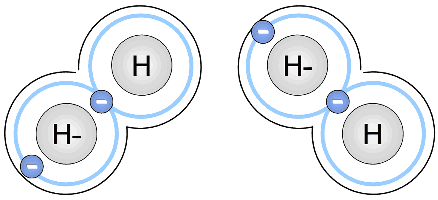
Polar bonds:
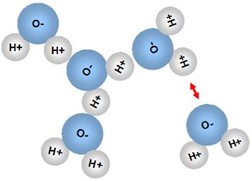
Ionic bond:
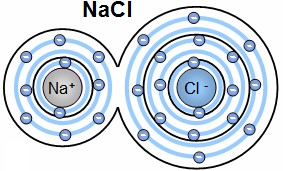
Metallic bond:
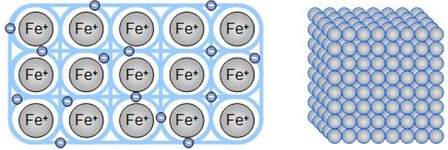
And from there, all of molecular chemistry and biochemistry, the world and life.
Relativity of Time
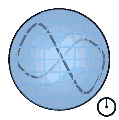

THAT generates a finite, multidimensional, and fundamental spatial and temporal space, whose perpetual transformations are the fundamental "ticks" of reality. But this does not refer to what we commonly call time. The latter, as an emanation of the former, would be specific to matter, paced by its own processes.
The greater the variations in the speed of matter, the less time space-time would have to respond, and thus, the less pressure it would exert on matter, slowing its internal processes. Therefore, upon returning, the twin who underwent significant accelerations during their journey would be younger than the one who stayed home.
For, regardless of the speed of matter, space-time would organize itself — even from far away — to flow toward it, and this organization would hold as long as its speed and that of its components remain uniform. But any change in speed would require a non-instantaneous reorganization of the flow.
Moreover, space-time would dilate as it flows toward matter, thus dilating time relative to a time measured at a distance from the deformation of space-time. A clock on Earth would therefore lag behind the same clock on a satellite in space.
